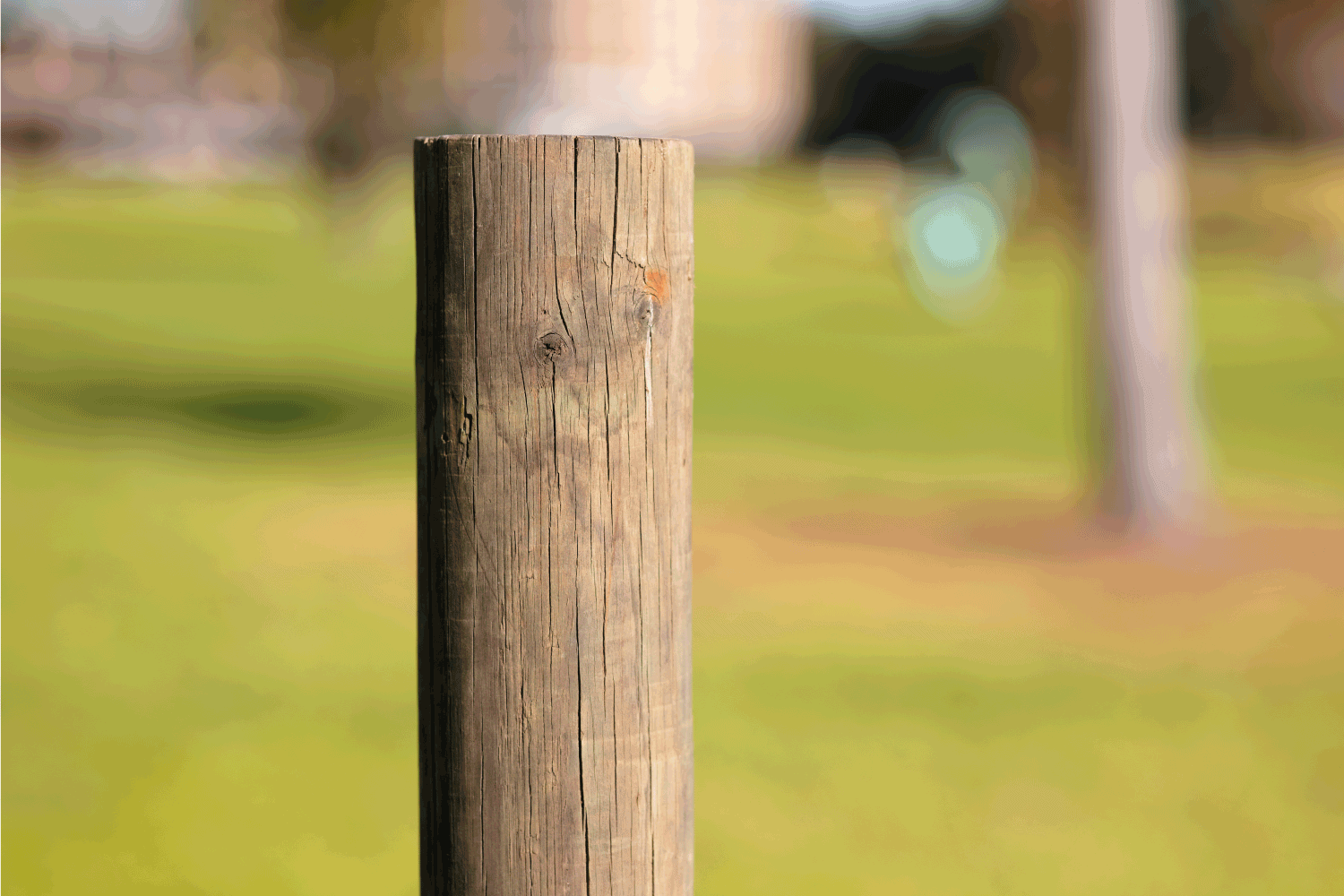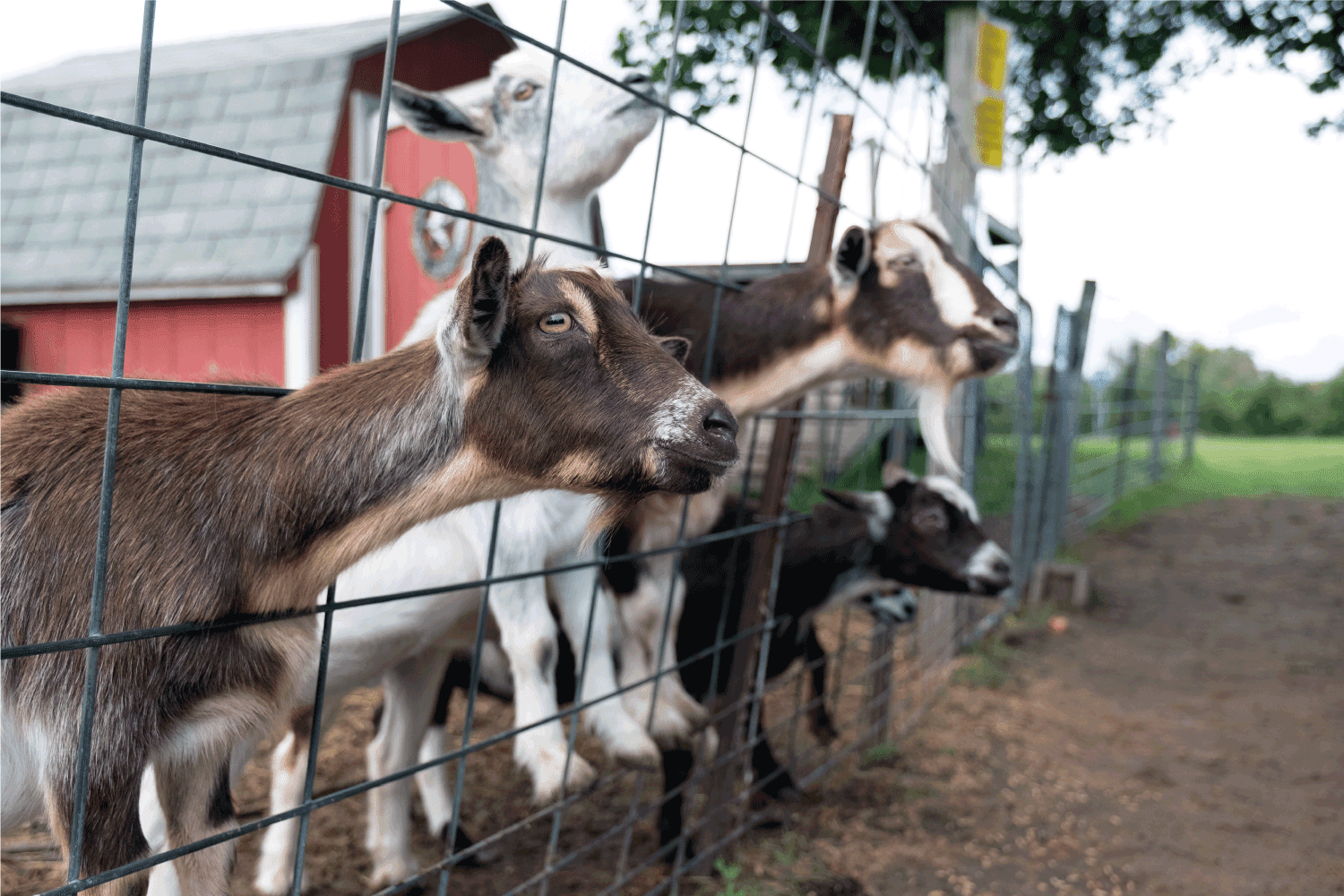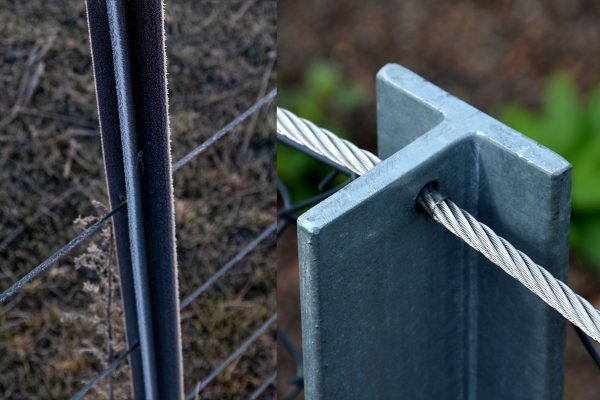T-posts are actually preferable for farming and agricultural purposes. They are durable, lightweight, easy to install, and affordable, due to this, large areas are best enclosed using T-posts. We have researched everything you need to know about the features, applications, and other considerations of its usage.
T-posts are highly suitable to enclose livestock such as goats, chickens, or cattle. Place your posts 8 to 12 feet apart and use wooden structures to anchor the corners and intermittently strengthen the fence. A wire mesh is best suited to complete the confinement.
Livestock, crops, and property exist better when protected by fences. Find out if T-posts are the answer to your needs, this article aims to assist you to make that informed decision.
Posts
Posts anchor and support the entire fence and a solid foundation will determine the stability, longevity, and effectiveness of your enclosure. The right kind of T-posts would adequately secure and confine most livestock including goats.
Experts, however, recommend combining them with treated lumber to strengthen the framework.
What Are T-Posts?
T-posts are studded steel columns with a flat plate at the bottom. When viewed from the top, it forms the letter 'T,' engineered to prevent the post from bending or twisting. The studs or notches keep the wire or mesh in place while the stabilizing plate serves to solidify the foundation.
Based on the amount of steel contained in the material, they are classified into light (1.01), regular (1.25), and heavy-duty (1.33).
The numeric value indicates the weight, in pounds, of steel per linear foot of the post. A heavy-duty rated post is your best option for livestock since it can withstand animal activity more effectively.
Treated Wooden Posts
Corner or boundary posts bear the exertion pull of the wire panels and necessarily have to be the most stable supporting component.
Chemically treated wood posts set in concrete are best suited for this purpose. Depending on the height of your fence above ground, 4x4 to 6x6 inch lumber or rounded posts with 4 to 6 inches diameter will provide adequate support.
The ideal layout consists of wooden corners and rail posts alternately placed between every five T-posts installed.
Panel Or Enclosure
Since your fence would serve as a livestock enclosure, a wire mesh panel features the most ideal configuration and structure. Welded, woven, or galvanized wire are among your options.
What Are The Different Kinds Of Wire For T-Posts Enclosure?
1. Welded Wire
Welded wire fences are made of lightweight iron or steel formed to create small grids and relatively closer spacing. Intersecting metal components are welded together and determine the basic structural strength of the mesh.
Over time, continued tension pressure from animal activity can cause them to snap or break, but with T-posts, the connections may be reinforced by securing the wire mesh to the studs with clips or fasteners.
Since welded wire is the most affordable material, it would be a good option that functions satisfactorily when combined with T-posts.
Check our Welded Wire Fence Mesh on Amazon.
2. Woven Fencing
With woven fencing, the wire is interlaced instead of welded and attached individually to the framework. When exposed to external force, the fence flexes to accommodate the tension and retains its form.
It is the preferred panel by most goat owners and breeders mainly because it can withstand this particular animal's behavior.
The standard grid spacing of woven fences is 4 by 4 inches which may contain adult livestock effectively but young goats or kids could get caught between the mesh.
3. Galvanized Wire
Galvanized wire mesh fencing is your strongest and most durable choice, the zinc coating keeps moisture out, and the material is repellent to rust and corrosion.
The best feature of galvanized mesh is its grid size, available in two-by-four-inch spacing, it provides an intact structure that protects and confines your goats effectively.
It may be costlier than alternative materials but requires less maintenance and may prove worthy in the long run.
Building The Fence
Given the above considerations, what exactly is the best manner to construct the ideal structure to meet your specific need?
Initially, determine the perimeter of the area and plot the post placement. Install the wooden corner and line posts first preferably with treated lumber.
The minimum recommended height for goat enclosures is 4 feet, but to be on the safe side, you may opt for 5 or even 6 feet. To simplify, let us assume you settled for a 5-foot fence, and use it as a reference for the rest of the text.
You will need a 7 1/2-foot wooden post since 2 1/2 feet go into the ground for the foundation. It is always best to set them in concrete but wait for the curing time to elapse before actually putting livestock in the enclosure.
What Is Cured Concrete?
Cured concrete means that the material has been set, hardened, and reached its full strength, the process takes two weeks to a month to complete.
The standard distance between succeeding posts is 8 feet, but since your fence is reinforced by wood, 12 feet spacing is acceptable.
Once the treated wooden posts are in place, you can install the T-posts. You will need 7-foot T-posts since 2 feet go into the ground for foundation and stability.
Again, establish the position, spacing, and alignment of the columns. The studded portion should face inward to keep the post behind the mesh. Drive them into the ground with a post pounder until the stabilizing plate is completely under the soil.
Note that the recommended proportion between T-posts and wooden columns is 5:1, that is, from the corner post, lay out five T-posts 12 feet apart then use a treated wooden post, succeeded by another five T-posts, then wood, and so on.
Finally, you can unroll and install the wire mesh on the inner portion of the fence. Whether you chose welded, woven or galvanized wire, be sure to use stainless or weatherproofed fasteners.
The best way to attach wire mesh to wooden posts is with galvanized U staples spaced closely to maximize the hold. As you unroll and stretch the mesh along the T-posts, affix them to the columns with wire clips or fencing staples using the studs as locks or anchors.
In Closing
T-posts are actually preferred by most farm owners because of their strength, easy installation, and low maintenance need. When supported with treated wooden posts and lined with galvanized wire mesh, the outcome is a highly suitable and functional enclosure. We hope you consider this combination and that the article proved to be helpful.
Should Fence Posts Be Below Frost Line? [How To Prevent Frost Heave Posts]

![Goat looking through a fence. wooden poles in concrete foundation. wire fencing, chain link fences. Can You Use T Posts For Goats [If So, How Far Apart To Space Them]](https://fencefixation.com/wp-content/uploads/2022/06/Goat-looking-through-a-fence.-wooden-poles-in-concrete-foundation.-wire-fencing-chain-link-fences.-Can-You-Use-T-Posts-For-Goats.png)




![A white Pygmy goat looks through a fence at a goat pen on a farm. Can You Use T Posts For Goats [If So, How Far Apart To Space Them]](https://fencefixation.com/wp-content/uploads/2022/06/A-white-Pygmy-goat-looks-through-a-fence-at-a-goat-pen-on-a-farm.-Can-You-Use-T-Posts-For-Goats.png)


